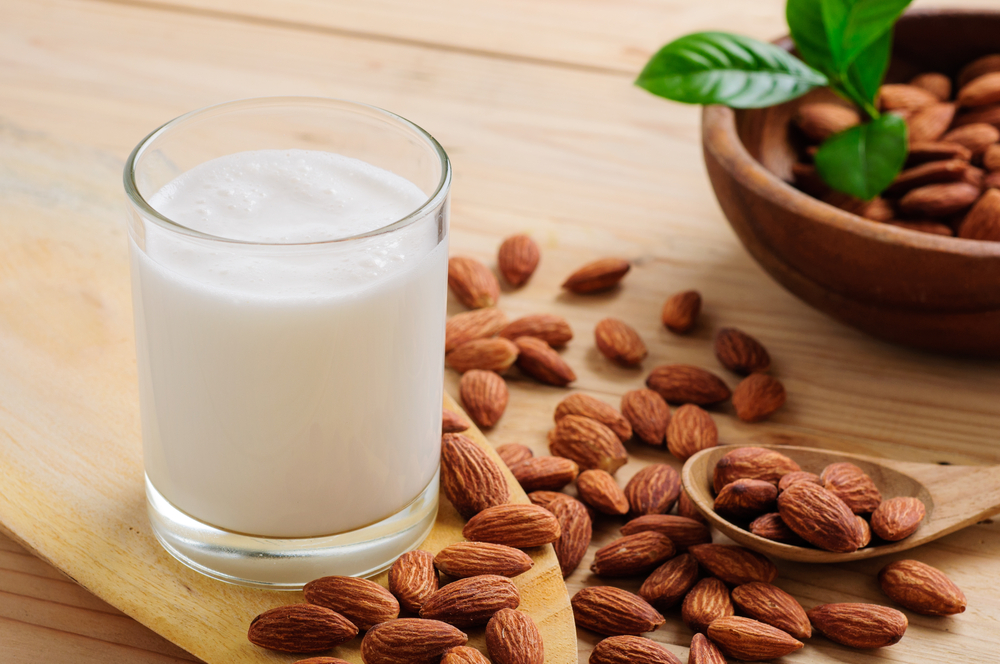Introduction
In today’s health-conscious world, many people seek alternatives to traditional dairy milk. One of the most popular choices is Silk Almond Milk, known for its smooth taste, plant-based ingredients, and nutritional value.
Understanding Silk Almond Milk nutrition facts is essential to making informed dietary choices, whether you want to manage weight, reduce dairy intake, or simply adopt a healthier lifestyle.
This detailed guide will walk you through everything you need about Silk Almond Milk, from its varieties and health benefits to potential drawbacks and environmental considerations.
What Is Silk Almond Milk?
Silk is one of the most trusted names in plant-based beverages. Founded in 1977, Silk has built its reputation by focusing on sustainability, taste, and nutrition. Silk Almond Milk is crafted by blending water with almonds and fortifying the mixture with essential nutrients like calcium, vitamin D, and vitamin E.
This process creates a creamy, dairy-free milk substitute that appeals to vegans, lactose-intolerant individuals, and anyone looking to add more plant-based options to their diet.
Unlike traditional cow’s milk, Silk Almond Milk contains no lactose, cholesterol, or saturated fats, making it a heart-healthy choice. Its production process is relatively simple: soaking almonds, blending them with water and straining the mixture to create a smooth, drinkable product.
Nutritional Overview
Understanding the facts about silk almond milk nutrition helps consumers appreciate why it’s such a popular alternative to dairy. A standard 1-cup (240ml) serving of Silk Original Almond milk typically provides:
| Nutrient | Amount |
|---|---|
| Calories | 60 |
| Total Fat | 2.5g |
| Saturated Fat | 0g |
| Carbohydrates | 8g |
| Sugars | 7g |
| Protein | 1g |
| Calcium | 470mg (35% DV) |
| Vitamin D | 2mcg (10% DV) |
| Vitamin E | 4mg (25% DV) |
| Sodium | 150mg |
| Cholesterol | 0mg |
Compared to cow’s milk, Silk Almond Milk is significantly lower in calories and sugar. It also contains added vitamins to compensate for raw almonds’ naturally lower nutrient content.
Varieties of Silk Almond Milk
Silk offers several varieties of almond milk to cater to different tastes and nutritional needs. Here’s a closer look:
- Silk Original Almondmilk: A lightly sweetened version with a mild, nutty flavour. Ideal for cereal, coffee, and smoothies.
- Silk Unsweet Almondmilk has only 30 calories per cup and no added sugars, making it perfect for those watching their sugar intake.
- Silk Vanilla Almondmilk: A hint of vanilla flavour makes this variety excellent for desserts and baking.
- Silk Chocolate Almondmilk: A rich, chocolatey alternative with more sugar but an irresistible taste.
- Silk Protein Almondmilk: Enhanced with pea protein to deliver 10 grams of protein per serving, making it closer to dairy milk’s protein content.
Each variety slightly differs in calorie count, sugar content, and flavour, so checking the labels depends on your dietary needs is essential.
Health Benefits
Silk Almond Milk isn’t just a tasty alternative; it also provides several health benefits:
1. Heart Health:
Silk Almond Milk supports heart health with zero cholesterol and low saturated fat. Studies suggest that replacing saturated fats with unsaturated fats, like those found in almonds, can reduce the risk of cardiovascular disease.
2. Bone Strength:
Thanks to its fortification with calcium and vitamin D, Silk Almond Milk helps maintain strong bones. These nutrients are crucial for preventing osteoporosis and supporting overall skeletal health.
3. Weight Management:
Because it is low in calories, especially in unsweetened varieties, Silk Almond Milk fits perfectly into weight-loss plans. Choosing a low-calorie beverage can significantly reduce daily calorie intake without sacrificing taste.
4. Lactose-Free Nutrition:
Silk Almond Milk offers a digestible, nutritious alternative for people with lactose intolerance. It allows individuals to enjoy milk-based recipes and drinks without digestive discomfort.
5. Antioxidant Properties:
Vitamin E, a powerful antioxidant in Silk Almond Milk, helps protect the body from oxidative stress and supports skin health.
Potential Drawbacks
While Silk Almond Milk nutrition facts highlight many positives, it’s also essential to consider a few potential drawbacks:
- Lower Protein Content: Unless you choose the Protein-enhanced version, Silk Almond Milk provides less protein than cow’s milk (1g vs. 8g per serving).
- Added Sugars: Flavored varieties like Vanilla and Chocolate can have high sugar levels, which may not align with all health goals.
- Allergen Alert: Although rare, individuals with nut allergies should avoid almond milk altogether.
Understanding these points ensures that Silk Almond Milk is incorporated appropriately based on individual health needs.
Fortification and Additives
Fortification is a key feature that boosts the nutritional value of Silk Almond Milk. Vital nutrients commonly added include:
- Calcium: Essential for strong bones and teeth.
- Vitamin D: Aids in calcium absorption and supports immune health.
- Vitamin B12: Important for red blood cell formation and neurological function.
- Vitamin E Acts as an antioxidant to protect cells.
Silk also uses natural thickeners like gellan gum and locust bean gum to improve the milk’s texture. Importantly, all Silk Almond Milks are Non-GMO Project Verified, ensuring consumers get a clean product without genetically modified ingredients.
Environmental Impact
Consumers turn to plant-based milks like Silk Almond Milk because of their lower environmental footprint. Although almond farming requires significant water usage, Silk sources its almonds responsibly and engages in sustainable practices.
Compared to dairy production, almond milk generates fewer greenhouse gases and uses less land. Silk also invests in water conservation efforts and eco-friendly farming practices to minimize its environmental impact.
Culinary Uses
Silk Almond Milk is incredibly versatile in the kitchen. Some popular uses include:
- Cooking: Add to soups, sauces, and savoury dishes.
- Baking: Use it in cakes, muffins, and breads as a dairy milk substitute.
- Coffee & Tea: Silk Almond Milk froths well and blends beautifully with hot beverages.
- Smoothies: It is a light, refreshing base for fruit or vegetable smoothies.
Its mild flavour compliments sweet and savoury dishes without overpowering other ingredients.
Consumer Considerations
When shopping for Silk Almond Milk, it’s essential to:
- Read Labels: Always check for added sugars, calorie counts, and nutrient fortifications.
- Select Unsweetened Options: Unsweetened varieties are the best choice if you’re looking to lose weight or manage your blood sugar.
- Check Expiration Dates: Although shelf-stable varieties last longer, always verify freshness, especially after opening.
Proper storage is essential. For best quality, Refrigerate Silk Almond Milk after opening and consume it within 7–10 days.
Conclusion
Silk Almond Milk is a nutritious, delicious alternative to dairy milk. Whether you choose Original, Unsweetened, or Vanilla, understanding the nutrition facts ensures you select the best option for your health needs. From its heart-health benefits to its low-calorie content and environmental advantages, Silk Almond Milk continues to grow in popularity among health-conscious consumers. Incorporating it into your daily routine can be a simple and effective way to enjoy a plant-based lifestyle.
Recommended Articles
4 Benefits of Regular Obstetrics Checkups During Pregnancy
What to Expect During a Skin Cancer Consultation with a Dermatologist
What You Should Know About Regenerative Orthopedics for Tendon Injuries









Leave a Reply